Godzilla: City on the Edge of Battle (2018) — Good Science Fiction, Not Great Godzilla
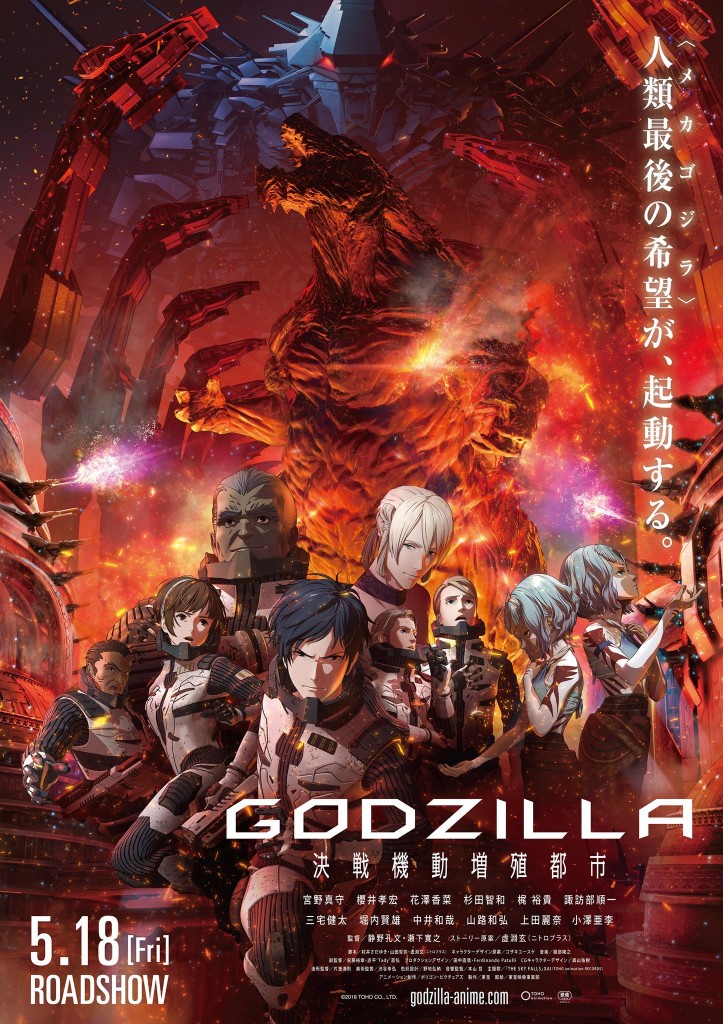 Last week was a significant one for the Big G. The first trailer for 2019’s Godzilla: King of the Monsters was unveiled at San Diego Comi-Con, displaying staggering scope and beauty set to the improbably perfect sound of Claude Debussy’s “Clair de lune.” Meanwhile, as fans salivated in anticipation of the next installment in the US Godzilla series after 2014’s Godzilla, the next Japanese Godzilla film made a quiet debut in North America via Netflix — Godzilla: City on the Edge of Battle (Gojira: Kessen Kido Zoshoku Toshi). It’s also a second installment: part two of a trilogy of animated Godzilla films from Toho Animation and Polygon Pictures that started with Godzilla: Planet of the Monsters.
Last week was a significant one for the Big G. The first trailer for 2019’s Godzilla: King of the Monsters was unveiled at San Diego Comi-Con, displaying staggering scope and beauty set to the improbably perfect sound of Claude Debussy’s “Clair de lune.” Meanwhile, as fans salivated in anticipation of the next installment in the US Godzilla series after 2014’s Godzilla, the next Japanese Godzilla film made a quiet debut in North America via Netflix — Godzilla: City on the Edge of Battle (Gojira: Kessen Kido Zoshoku Toshi). It’s also a second installment: part two of a trilogy of animated Godzilla films from Toho Animation and Polygon Pictures that started with Godzilla: Planet of the Monsters.
I was roughly satisfied with Planet of the Monsters. It explored the theme of Godzilla as a deity and introduced intriguing science-fiction concepts, but it never found a solid adventure throughline for its apocalyptic Earth setting and left the potential of an animated Godzilla largely unrealized. City on the Edge of Battle makes forward strides as it deepens its SF backstory, now freed from having to go through the set-up that was necessary in the first movie. But as a Godzilla film, it still doesn’t work, and this makes me wonder exactly who the movie is targeted at. Godzilla fans? Anime fans? Science-fiction fans not-otherwise-specified? The last group may be the most satisfied, but I predict general dissatisfaction all around.
For those who came in late (and there’s no way to keep up with this movie unless you’ve seen Planet of the Monsters), here’s how events stood at the conclusion of Part One:
The remnants of the human race, in exile among the stars after Godzilla drove them off the Earth, choose to return to their homeworld and attempt to reclaim it from the monster. Although twenty years have passed on the refugee spaceship the Aratrum, over twenty-two thousand years have passed on Earth. Over the millennia, Godzilla’s biology has radically altered the ecosystem into a bizarre and hostile environment. With the assistance of two humanoid alien races, the mystical Exif and the technological Bilusaludo, the humans mount an offensive to destroy Godzilla. The plan of young Captain Haruo Sakaki succeeds — then immediately fails when it turns out the monster they killed (Godzilla Filius) was only an offspring of the original Godzilla that ravaged the planet (Godzilla Asu, “Godzilla Earth”). The true Godzilla emerges, grown in size and strength over thousands of years to unimaginable power. So was the fight all for nothing?

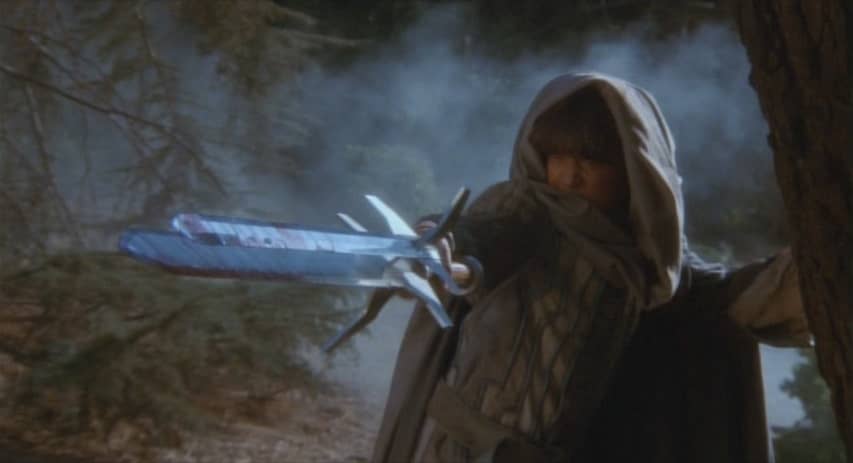
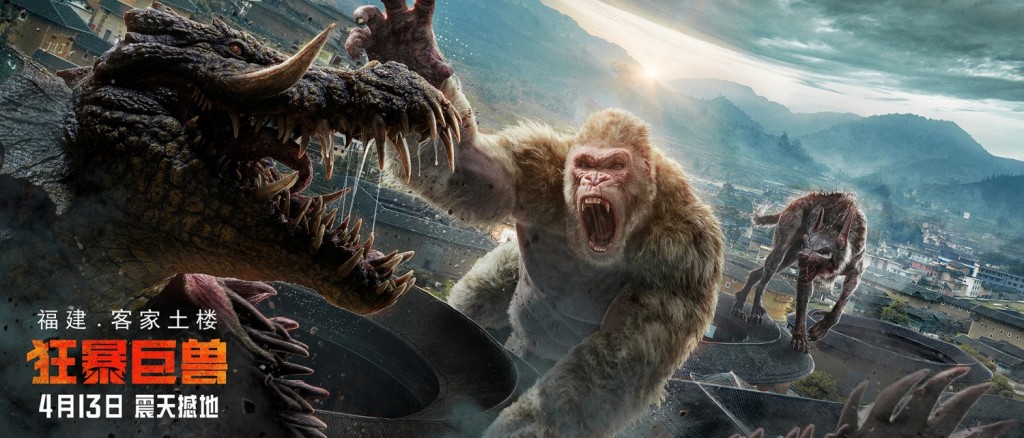
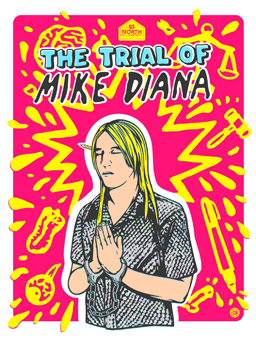 After my first two films last Saturday, I left the large Hall Theatre to see a documentary in the 150-plus-seat De Sève Theatre across the street. The documentary was called Boiled Angels, and it presented the case of zinester and comics creator Mike Diana, whose transgressive work led to him being arrested and put on trial in Florida in the 1990s. I’d followed Diana’s plight at the time through reports in The Comics Journal, and was intrigued to learn more about it now. But if I personally was interested in the film as a look at comics history, I was surprised to find that much of the rest of the crowd was drawn by the chance to see new work by horror director Frank Henenlotter, creator of works like Bad Biology, Frankenhooker, Brain Damage, and Basket Case.
After my first two films last Saturday, I left the large Hall Theatre to see a documentary in the 150-plus-seat De Sève Theatre across the street. The documentary was called Boiled Angels, and it presented the case of zinester and comics creator Mike Diana, whose transgressive work led to him being arrested and put on trial in Florida in the 1990s. I’d followed Diana’s plight at the time through reports in The Comics Journal, and was intrigued to learn more about it now. But if I personally was interested in the film as a look at comics history, I was surprised to find that much of the rest of the crowd was drawn by the chance to see new work by horror director Frank Henenlotter, creator of works like Bad Biology, Frankenhooker, Brain Damage, and Basket Case.  In my last couple of posts I’ve looked at
In my last couple of posts I’ve looked at  Weekend days are busy days at the Fantasia film festival. Weekends are when most people are most often free to see movies, so the programmers obligingly schedule a lot of films for Saturdays and Sundays. Last Saturday I had three movies I wanted to see. On the Sunday, I had five. Which meant that Fantasia was well and truly underway.
Weekend days are busy days at the Fantasia film festival. Weekends are when most people are most often free to see movies, so the programmers obligingly schedule a lot of films for Saturdays and Sundays. Last Saturday I had three movies I wanted to see. On the Sunday, I had five. Which meant that Fantasia was well and truly underway.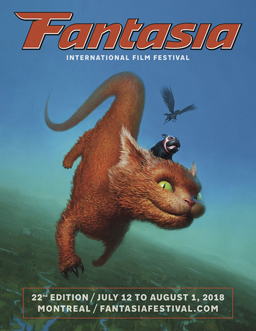 Fantasy’s described by fantasy: consider John Crowley’s Little, Big, a novel about a faerieland where the further in you go the bigger the land becomes. A powerful image, it echoes the way fascinations gain in depth and scope the more you explore them. How familiar experiences can become strange the more you dig deeper into them, birthing mystery, growing weird. Art and story perhaps most of all. So I am about to begin my coverage of the
Fantasy’s described by fantasy: consider John Crowley’s Little, Big, a novel about a faerieland where the further in you go the bigger the land becomes. A powerful image, it echoes the way fascinations gain in depth and scope the more you explore them. How familiar experiences can become strange the more you dig deeper into them, birthing mystery, growing weird. Art and story perhaps most of all. So I am about to begin my coverage of the 

